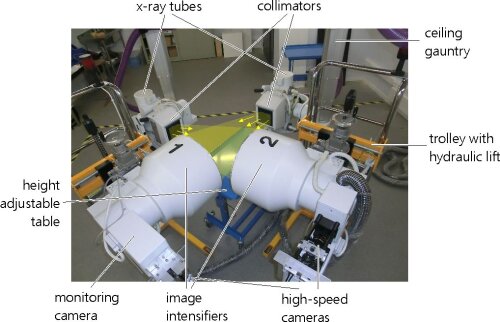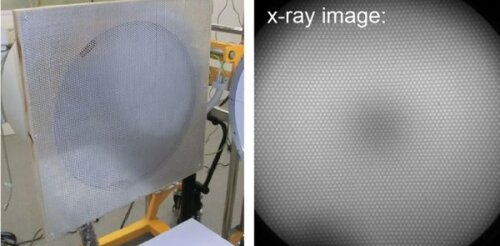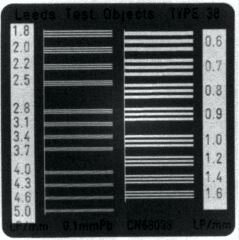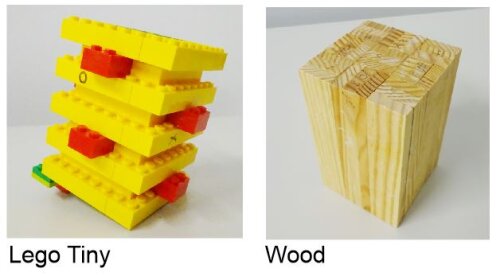Hardware components

- x-ray generator: Philips Super CP80
- x-ray tubes: SRM 0511 ROT 500 x
- collimators: Philips XD6028
- image intensifiers: Philips Imagica HC 36 cm
- monitoring camera: XTV11
- high-speed cameras: Photron FastCam Mini WX50-32GB
- high-speed camera lenses: Samyang 85mm F/1.4 F-mount
- controller computer: HP Z240 32GB RAM Intel Xeon E3-1240v5
- gauntry: Arcoma ArcoCeil motorised ceiling stand
- trolley: RST-medical image intensifier trolley
- height adjustable tables: Eurokraft material stands (250 kg)
The room
The x-ray video room is situated in the basement, and is shielded by 0.5 mm lead equivalent in the walls and ceiling. The system is controlled from panels behind lead-glass windows.
Alignment
Proper alignment between the x-ray beam and the image intensifier screen is obtained by back-reflecting a point laser that shines perpendicular away from the image intensifier's input screen to a mirror attached in front of the collimator.
Image undistortion
Images of punctured aluminium grids can be used to correct for distortion artefacts using XMA-lab software.

Resolution
Spatial resolution of the x-ray images is between 2.2 line pairs per mm (large view mode) and 4.5 line pairs per mm (small view mode).

3D Calibration
Two 3D calibration objects designed for usage with XMA-lab software are available. The coordinate specification files (.csv), and symbol reference file (.ref) can be below (link to OneDrive folder):


Download the 3d2ymox calibration object reference files.
Notes on how to combine X-ray calibration with 'normal' light camera calibration can be found under '3D Kinematics'.
Marker tracking accuracy
The spatial accuracy of 3D tracking of radio-opaque spheres, estimated from the variation in the calculated distance between two spheres on a rigid object moving around in the 3D-space, is about 0.1 mm.


